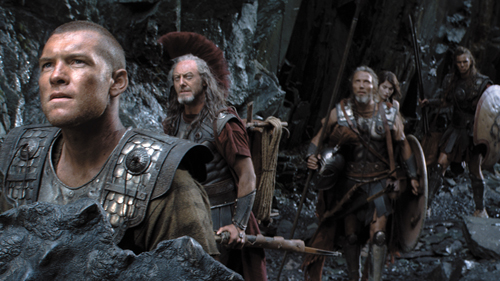Films released in three-dimensional format are not a new concept, but the recent influx of 3-D action-adventure and animated films is causing the movie and television industry to quickly transition to capitalize on the stunning success of these 3-D films, from “Avatar” to “Alice in Wonderland.”
While there is frenzy among the entertainment industry over the newfound success of 3-D movies, audiences may not embrace this phenomenon for long.
“When synchronized sound and color were introduced (in film), it became the standard. It’s not entirely clear if watching a movie in 3-D has the same demand,” said film historian and visiting associate professor Jonathan Kuntz, who is hesitant to claim that 3-D movies are more than a trend.
“There is a definite shift to digital exhibition, which is here to stay,” he said.
With over twenty 3-D films being released in 2010, movie theaters across the country are rushing to convert their projectors into digital formats that are compatible with 3-D movies.
The current deficit of available screens needed to showcase these movies may limit the success of 3-D movies that are released in close succession, including recently released “Alice in Wonderland,” “How To Train Your Dragon” and “Clash of the Titans.” All three films were released within a month of each other, forcing distributors to compete for the limited screens.
However, with increased admission prices that range from $3 to $5 extra to watch the movie in 3-D, audiences may also be only willing to spend this money for action spectacles and animated fare.
Warner Brothers originally shot “Clash of the Titans” for a 2-D release, but following the unprecedented success of “Avatar” (more than $2.6 billion worldwide) and other films, decided the convert the film to monopolize on the 3-D phenomenon. But as Kuntz said, “While this format works for films like “˜Avatar,’ I don’t think audiences will pay the extra price to see something like a romantic comedy in 3-D.”
The 3-D format was first introduced in the early 1900s and gained small interest in the ’50s to bring audiences back into theaters following the advent of television.
Although developers hoped to provide an experience of immersion that was not offered at home, audiences generally became disinterested after one viewing experience, partially due to the headache-inducing eyewear. Three-D films briefly regained popularity in the ’80s, but, as in the ’50s, interest waned.
However,according to Daily Variety, 2009 3-D revenue accounted for 11 percent of total North American box-office revenue, compared to only two percent in 2008. This increased revenue led to record-breaking box office performances, which has balanced decreasing DVD sales and has even become a deterrent for pirating.
Animation director and UCLA film professor Chuck Sheetz attributes the current success of 3-D films to better technology. “In terms of CGI … animation, it’s easy to create a 3-D animated film. It’s just a matter of creating two separate images of the same scene on the computer,” Sheetz said.
“A polarizing filter is then used to separate these two images so each eye sees one image and the brain interprets and combines these two images to create (the illusion of) 3-D.”
Entertainment Weekly also reported that television makers such as Sony, Toshiba, Panasonic, Sharp and LG are also attempting to gain from this new lucrative phenomenon with the development of high-definition television 3-D products that will project the 3-D films enjoyed in theaters as well as 3-D channels. ESPN and Discovery Channel have also announced that they plan to have 3-D channels, according to Variety.
With so many developers adding this extra dimension into their plans, 3-D may become more than just a novelty ““ it may become an audience expectation. “This generation may become used to seeing films in this format,” Sheetz said, “but it still has to be a good film. An audience will still tell people the movie is lousy, even in 3-D.”
Because the film industry has tried the 3-D format so many times, many industry insiders doubt that it is here to stay.
“It seems that Hollywood is pretty serious this time around. It could be one step closer to something like holographic films, or it could be the third strike,” said animator and director Doug Ward.
“I am intrigued by the format. I remember seeing “˜Creature from the Black Lagoon’ in 3-D as a kid and I was fascinated by it because of the cool underwater effects that were in 3-D … but I also remember seeing “˜Dial M for Murder’ in 3-D, and that was not necessary.”
So while many films will be released in the upcoming months, the film industry waits to see how audiences will respond to increased ticket prices, more 3-D films from different genres (movies ranging from the next “Step Up” to the upcoming “Jackass” film are expecting to receive the 3-D treatment), and whether they will purchase 3-D televisions or camcorders in the near future. With a price tag of $20 million added to the production cost of a film, studios (and audiences) are willing to spend in hopes of capitalizing on this phenomenon.
